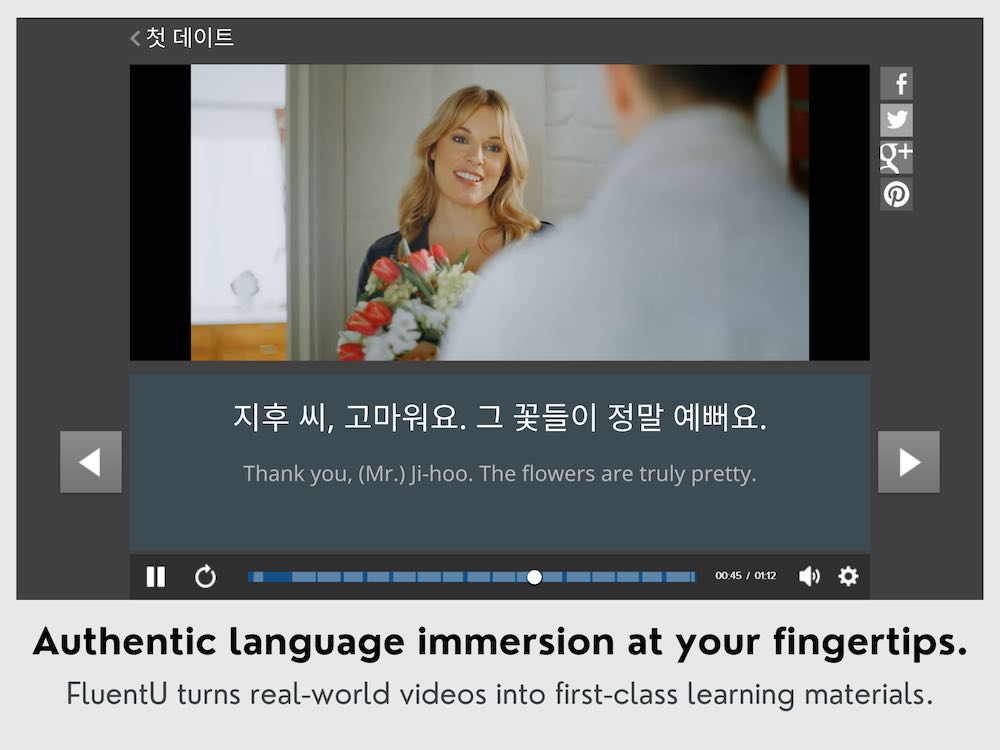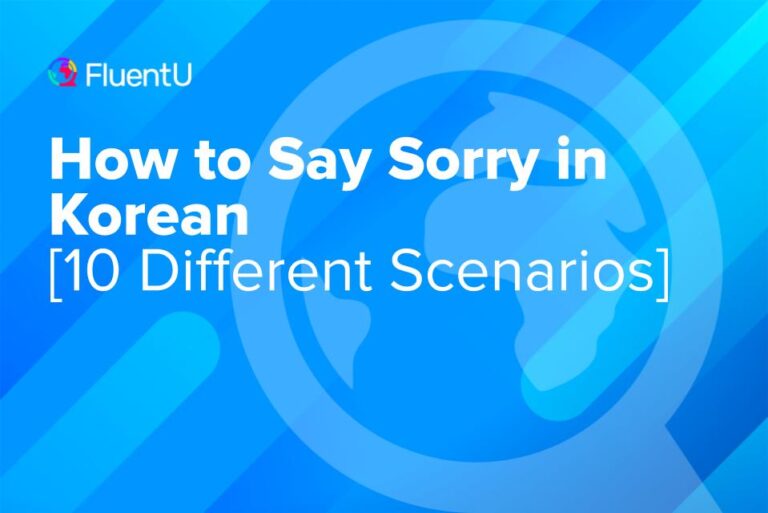Korean Pronouns: The Complete Guide
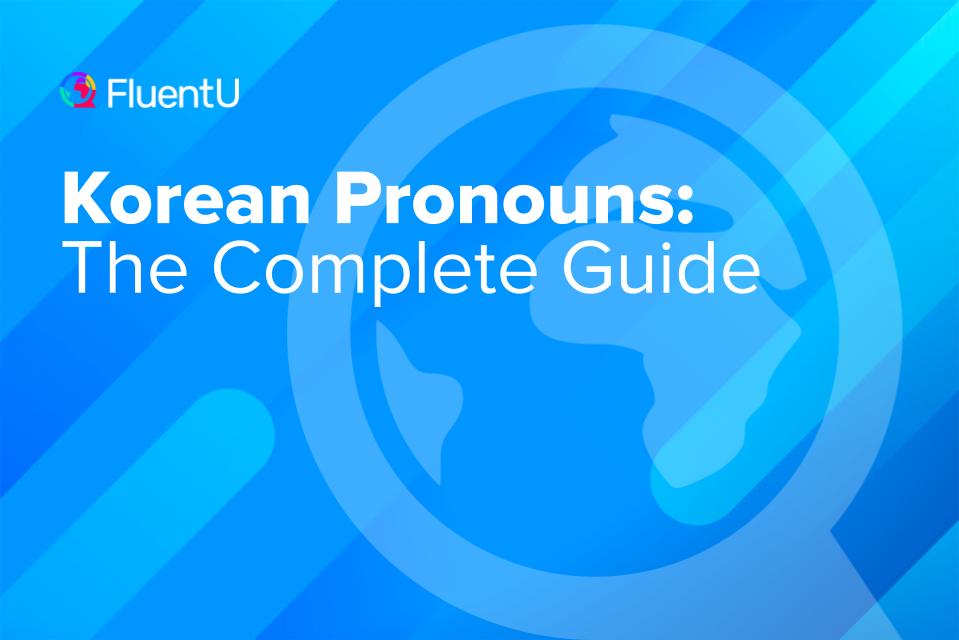
Something to note about Korean pronouns is that there are a lot of them.
So today, let’s learn some of the most common ones and get a familiar feel for how they work. With these Korean pronouns under your belt, you’ll already have everything you need to start having better conversations.
And once mastered, your grasp of the Korean language will improve significantly.
Download: This blog post is available as a convenient and portable PDF that you can take anywhere. Click here to get a copy. (Download)
Personal Pronouns in Korean
Pronouns are words used to substitute nouns so we don’t repeat the same words over and over. Personal pronouns are used to refer to people, and they can be singular or plural. And, because we’re talking about Korean here, personal pronouns can also be casual or formal.
Personal pronouns come in three forms—the first-person, the second-person and the third-person. Here is a summary of the personal pronouns.
Casual Personal Pronouns
| Singular | Plural | |
|---|---|---|
| First Person | 나 (na) | 우리 (u-ri) |
| Second Person | 너 (neo) | 너희 (neo-hui) |
| Third Person | 걔 (gyae) | 그들은 (geu-deur-eun) |
Formal Personal Pronouns
| Singular | Plural | |
|---|---|---|
| First Person | 저 (jeo) | 우리 (u-ri) 저희 (jeo-hui) |
| Second Person | 여러분 (yeo-reo-bun) | |
| Third Person | 그 (geu) 그녀 (geu-nyeo) | 그분들 (geu-bun-deul) |
First-person Singular
나 (na) — I (casual)
나는 너를 좋아해. (Na-neun neoh-reul jo-a-hae.) — I like you.
저 (jeo) — I (formal)
저는 호주에서 왔습니다. (Jeo-neun ho-ju-e-seo wa-sseum-ni-da.) — I come from Australia.
First-person Plural
우리 (u-ri) — we/us/our (casual and formal)
우리는 내일 만나기로 했죠? (U-ri-neun nae-il man-na-gi-ro het-chyo?) — We agreed to meet tomorrow, right?
저희 (jeo-hui) — we/us/our (formal)
저희는 아직 숙제를 안 냈어요. (Jeo-hee-neun a-jik suk-jae-reul an neass-eoh-yo.) — We haven’t handed in our homework yet.
Korean is a collective and inclusive culture. This means Korean speakers may use the word for “our” but actually mean “my.” For example, 우리 엄마 (u-ri eom-ma), meaning “our mom,” is used to mean “my mom.”
In formal language, you can use both 우리 and 저희. These two have a bit of nuance in their formal function, though.
When you use 우리, it means the listener or the person you’re talking to is included in the “we” described. In other words, by saying “we,” you mean “you and me.” When you use 저희, the listener or the person you’re addressing is excluded in the “we.”
For example, if you tell your mom “We’re going to the movies,” as in, “My friends and I are going to the movies,” you’d use 저희.
Second-person Singular
너 (neo) — You
너 뭐해? (Neo mwo-hae?) — What are you doing?
This is a highly casual form of address and can only be used for people your age, who you’re also close with.
당신 (dang-sin) — You
Dictionaries often use this as a more formal translation for “you,” and it’s frequently used in lyrics, poems and other written works. But it’s rarely used in spoken Korean or informal engagements.
당신 carries both positive and negative connotations. The word is sometimes used as a term of endearment for spouses (usually middle-aged) similar to the English “sweetheart” or “honey.”
At the opposite extreme, if you feel like getting punched one morning—or you want to do some swinging of your own—당신 can be effectively used for these ends.
A well-placed 당신 in the middle of a conversation with a stranger can start a dentist-sanctioned fight. For the unnecessary nuances, the Korean beginner should avoid using 당신.
Professions, Titles and Roles
Other than that, there’s no direct “you” in Korean. Instead of using the pronoun “you,” you would instead refer to the person you’re speaking to in the third person. It feels strange at first, but you get used to it!
One of the most common substitutes for the word “you” is 씨 (sshi). It follows a simple formula:
Given name + 씨
The speaker can simply name the person straight out and append it with 씨. This is comparable to the English Mr., Ms. or Mrs. For example:
서준 (Seo-jun) becomes 서준 씨 (Seo-jun sshi)
Each time the person is addressed, his name will be called out. In Korean, this is better than getting addressed as “you.”
The Korean language also uses professions, titles and roles as substitutes for “you.” Here are some examples:
님 (nim)
아저씨 (ah-jeo-ssi)
아줌마 (a-jum-ma)
아주머니 (a-ju-meo-ni)
학생 (hag-saeng)
님 (nim) is an honorific especially employed for people belonging to a respected professional class like 박사님 (bak-sa-nim) for Ph.D.’s, 선생님 (seon-saeng-nim) for teachers or 목사님 (mok-sa-nim) for pastors.
For middle-aged men and women, 아저씨 (ah-jeo-ssi) and 아줌마 (a-jum-ma) can be used respectively. They’re the equivalent of the English “mister” and “ma’am.” 아줌마 might come off as a bit rude to some, so you can use the more polite alternative 아주머니 (a-ju-meo-ni).
If somebody looks young enough to be a student, you can address him as 학생 (hak-saeng) — student.
Second-person Plural
너희 (neo-hui) — you all (casual)
나는 내가 너희 모두를 믿을 수 있다는 것을 안다. (Na-neun nae-ga neo-hui mo-du-reul mid-eul su it-da-neun geos-eul an-da.) — I know I can count on all of you.
여러분 (yeo-reo-bun) — you all (formal)
여러분, 만나서 반가워요. (Yeo-reo-bun, man-na-seo ban-ga-wo-yo.) — Nice to meet you, everyone.
너희 is the plural form of “you” and is similar to a phrase like “you guys” or “y’all.” It can be used to address your circle of friends.
여러분, on the other hand, is more polite and is used to address an audience. For example, a YouTuber can use this to greet his viewers.
Third-person Singular
그 (geu) — he
그는 키가 크다. (Geu-neun ki-ga keu-da.) — He is tall.
그녀 (geu-nyeo) — she
그녀는 예쁘다. (Geu-nyeo-neun ye-ppeu-da.) — She is pretty.
걔 (gyae) — that boy/girl
걔는 똑똑해. (Gyae-neun ttok-ttok-hae) — He/she/that person is smart.
Technically, “he” and “she” in Korean is translated as 그 and 그녀 respectively. However, you’ll rarely hear these words coming out of a native speaker’s mouth. You’ll mostly find it in Korean textbooks, songs or poems. 걔 (gyae), meaning “that boy or girl,” is used instead.
In English, we’re so used to saying “he” or “she” and establishing the gender of the person being discussed. By using 걔, which doesn’t specify gender, the context in the Korean conversation plays a vital role in determining who’s actually being referred to. Keep in mind that 걔 is very informal and casual.
Instead of using 그 (he), 그녀 (she) and their accompanying particles, to refer to a person politely, an option is to fall back on the practice of actually naming the person or mentioning his or her title, role or position. You could also say 그분 (geu-bun), with 분 (bun) used a formal and polite word for “person.”
Third-person Plural
그들은 (geu-deul-eun) — they (casual)
그들은 내일 돌아올 거야. (Geu-deul-eun nae-il dor-a-ol geo-ya.) — They’ll be back tomorrow.
그분들 (geu-bun-deul) – they (formal)
그분들은 매주 일요일에 공원에 가세요. (Geu-bun-deul-eun mae-ju il-yo-il-e gong-won-e ga-seyo.) — They go to the park every Sunday.
그들은 is used to talk about a group of people who are absent or away from the conversation. This would be appropriate to use for friends and people who are similar in age and rank to the speaker.
This is the plural version of the word we saw above. The word 그분들 is the same as 그들은 but more formal. Thus, it’s more appropriate for referring to a group of people who are your seniors.
Demonstrative Pronouns in Korean
Demonstrative pronouns are often used to point out objects and their locations.
| Thing | Place | |
|---|---|---|
| 이 (ee) | 이거 (i-geo) - This | 여기 (yeo-gi) - Here |
| 그 (geu) | 그거 (geu-geo) - That | 거기 (geo-gi) - There |
| 저 (jeo) | 저거 (jeo-geo) - That | 저기 (jeo-gi) - Over there |
There are three demonstrative stems that you need to remember, and they all have something to do with the physical distance of an object relative to the speaker and listener.
이 (ee) — This
이거 주세요. (I-geo ju-se-yo.) — This, please.
이거 얼마예요? (I-geo eol-ma-ye-yo?) — How much is this?
이거 살게요. (I-geo sal-ge-yo.) — I’ll buy this.
이, which means “this,” is used to refer to something near the speaker. So if you’re holding a pencil, you’d say, 이 연필 (ee yeon-pil) —“This pencil.”
그 (geu) — That
그거 주세요. (Geu-geo ju-se-yo.) — That, please.
그 is used to refer to something far from the speaker… but near the listener. So if the person you’re talking to is holding a paper, you say 그 종이 (geu jong-i) — “That paper.”
저 (jeo) — That… Over There
저기요! (Jeo-gi-yo!) — Over there!
저거 얼마예요? (Jeo-geo eol-ma-ye-yo?) — How much is that over there?
저 is used when referring to something that’s far from both the speaker and listener. So if you and your friend are walking and talking about your dream ride and you happen to spot it, you can say 저 차 (jeo cha) — “That car.”
Interrogative Pronouns in Korean
Interrogative pronouns are the words used to ask a question. They are the What, When, Where and Who sort of questions.
| Korean | English |
|---|---|
| 누구 (nu-gu) | Who |
| 뭐 (mwo) | What |
| 언제 (eon-je) | When |
| 어디 (eo-di) | Where |
| 어느 (eo-neu) | Which |
| 어떤 (eo-tteon) | What kind of |
Here are the basic Korean interrogative pronouns:
누구 (nu-gu) — Who
누구예요? (Nu-gu-ye-yo?) — Who is that person?
뭐 (mwo) — What
이거 뭐예요? (I-geo mwo-ye-yo?) — What is this?
언제 (eon-je) — When
생일이 언제예요? (Saeng-il-i eon-je-ye-yo?) — When is your birthday?
어디 (eo-di) — Where
어디에 가요? (Eo-di-e ga-yo?) — Where are you going?
어느 (eo neu) — Which
어느 나라 출신이세요? (Eo-neu na-ra chool-shin i-se-yo?) — Which country are you from?
어떤 (eo-tteon) — What Kind Of
어떤 음식을 좋아하세요? (Eo-tteon eum-shig-eul joh-a-ha-se-yo?) — What kind of food do you like?
Possessive Pronouns in Korean
Possessive pronouns are like clingy girlfriends at the mall. They indicate ownership, bond or some sort of relationship.
| Casual | Formal | |
|---|---|---|
| My | 나의 (na-ui) | 저의 (jeo-ui) |
| Your | 너의 (neo-ui) |
In Korean, 의 (ui) is the possessive particle.
You can think of 의 as the equivalent of the “apostrophe S” placed at the tail of the noun to signify ownership or possession (for example, Kathy’s bag).
의, in spoken form, sounds like 에 (e). And like personal pronouns, possessive pronouns also have casual and formal forms.
“My” in Korean
나의 (na-ui) — my (casual)
내 친구 (nae chin-gu) — my friend
저의 (jeo-ui) — my (formal)
제 가족 (je ga-jok) — my family
You might’ve noticed a difference between the Korean words for “my” and the way they were used in the example sentences, 내 and 제.
This is because 나의 can be shortened to 내 (nae) and 저의 to 제 (je).
“Your” in Korean
너의 (neo-ui) — your (casual)
In writing, 너의 can be shortened to 네. But in spoken form, native speakers say it as 니 (nee). Keep in mind that this is informal and can only be used with people younger than you and those you’re close to.
For safety purposes, 네 is spoken as 니. The reason is that 네 (your) and 내 (my) sound very much the same. And in situations when the distinction between “my” and “your” is crucial, like in answering the question, “Who’s girlfriend is she?”, you better be crystal clear with the answer. Otherwise, 네 인생 (ne in-saeng) — “your life” might be in danger.
3 Things to Know About Korean Pronouns
You don’t see them in every sentence.
Like in many other languages, Korean speakers usually just drop pronouns whenever they can.
As long as the context is clear and the subject of the conversation has been established, the pronouns aren’t needed to express a clear thought. In any language, don’t underestimate the power of context and gestures to fill in any gaps.
Where you’ll find Korean pronouns most powerful is in songs, poems and dramas. However, we still study them because, as you found out above, whenever they do appear in conversations, they imply a lot and affect the tone.
There are “casual” and “formal” pronouns.
You already know this. Korean has a separate linguistic system for casual engagements and another one for polite and formal occasions.
One language is used for friends, people you’re close with and people of the same age or rank. The other is big on respect and is employed when interacting with elders, strangers, bosses or people who occupy higher social ranks.
Korea observes a hierarchical system of rules. While in the West, it can be considered rude to ask someone their age as a stranger, Koreans almost always have to ask for your age. This allows them to properly address you. They’re not trying to be cheeky or rude, they simply want to use the proper language with you.
That said, there are casual pronouns used for casual conversations and formal pronouns used for formal situations.
There’s no “you” in Korean.
As you learned above, instead of having one word for “you,” Korean has multiple.
Native speakers make use of the actual names, positions, honorifics and roles when referring to people, instead of using the word “you.” So for example, instead of “you,” native speakers might highlight their relationship with the person they’re addressing.
They might also use terms like 누나 (noo-na) if a male speaker addresses an older female, or 언니 (un-nie) if a female speaker addresses an older female. This means “older sister” and is also used for people who are not family.
While pronouns are supposedly used so that we don’t repeat ourselves too much, in the case of those Korean “you” substitutes, you can repeat names as often as you want without them being considered a drag in the conversation.
In other words, native speakers aren’t too bothered when you say something like “Right this way, Mr. Johnson. Please sit down, Mr. Johnson. Would like some tea, Mr. Johnson?”
So there you have it!
Like I mentioned before, the most common places to find Korean pronouns are songs, poems and dramas. So mastering the most common ones will set you well on your way to understanding more of your favorite Korean content, which can be made even easier with a program like FluentU.
FluentU takes authentic videos—like music videos, movie trailers, news and inspiring talks—and turns them into personalized language learning lessons.
You can try FluentU for free for 2 weeks. Check out the website or download the iOS app or Android app.
P.S. Click here to take advantage of our current sale! (Expires at the end of this month.)
You now have a working knowledge of Korean pronouns. Hopefully, you’re feeling confident about when to use each and how you should address (and talk about) people of different ages and roles.
Download: This blog post is available as a convenient and portable PDF that you can take anywhere. Click here to get a copy. (Download)
And One More Thing...
If you enjoyed this post, you're already halfway to having the time of your life learning Korean with FluentU!
FluentU makes it possible to learn with K-pop videos, funny commercials, entertaining web series and more. Just a quick look will give you an idea of the variety of FluentU videos on offer:
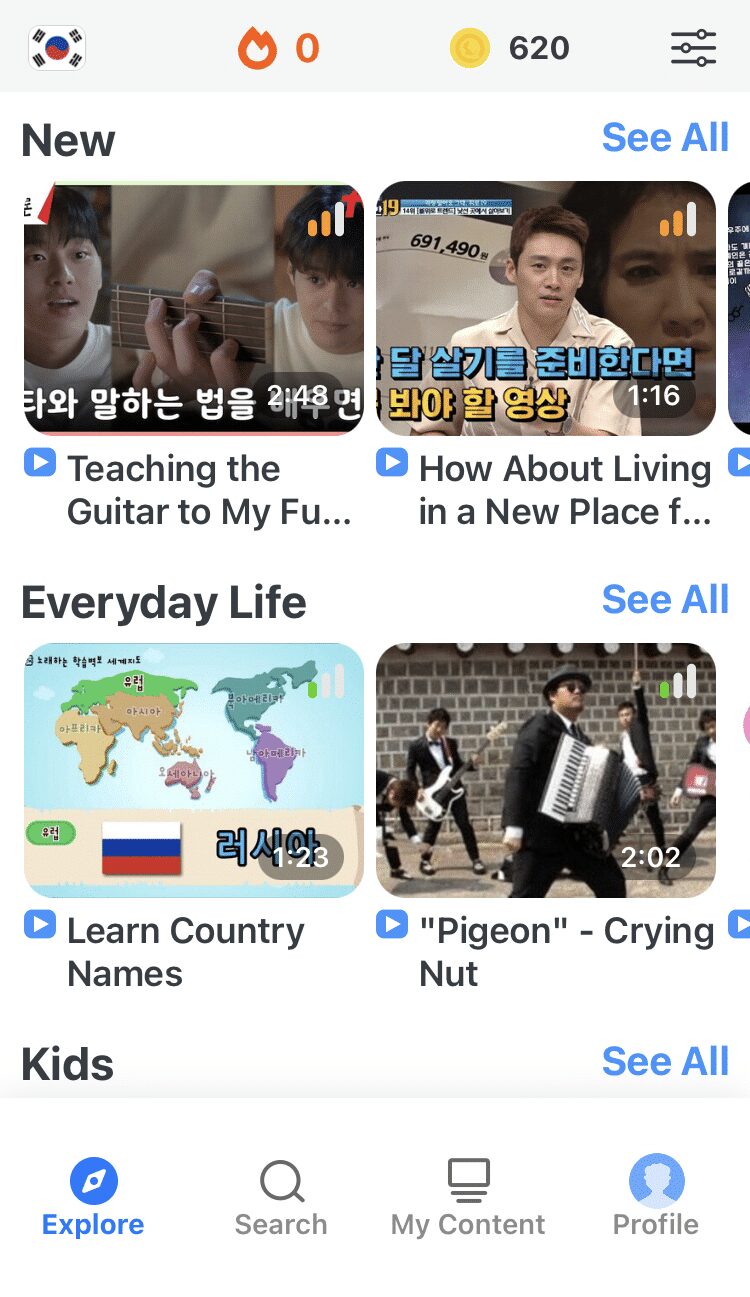
FluentU really takes the grunt work out of learning languages, leaving you with nothing but engaging, effective and efficient learning. It's already hand-picked the best videos for you (which are organized by level and topic), so all you have to do is simply choose any video that strikes your fancy to get started.
Each word in the interactive captions comes with a definition, audio, image, example sentences and more.
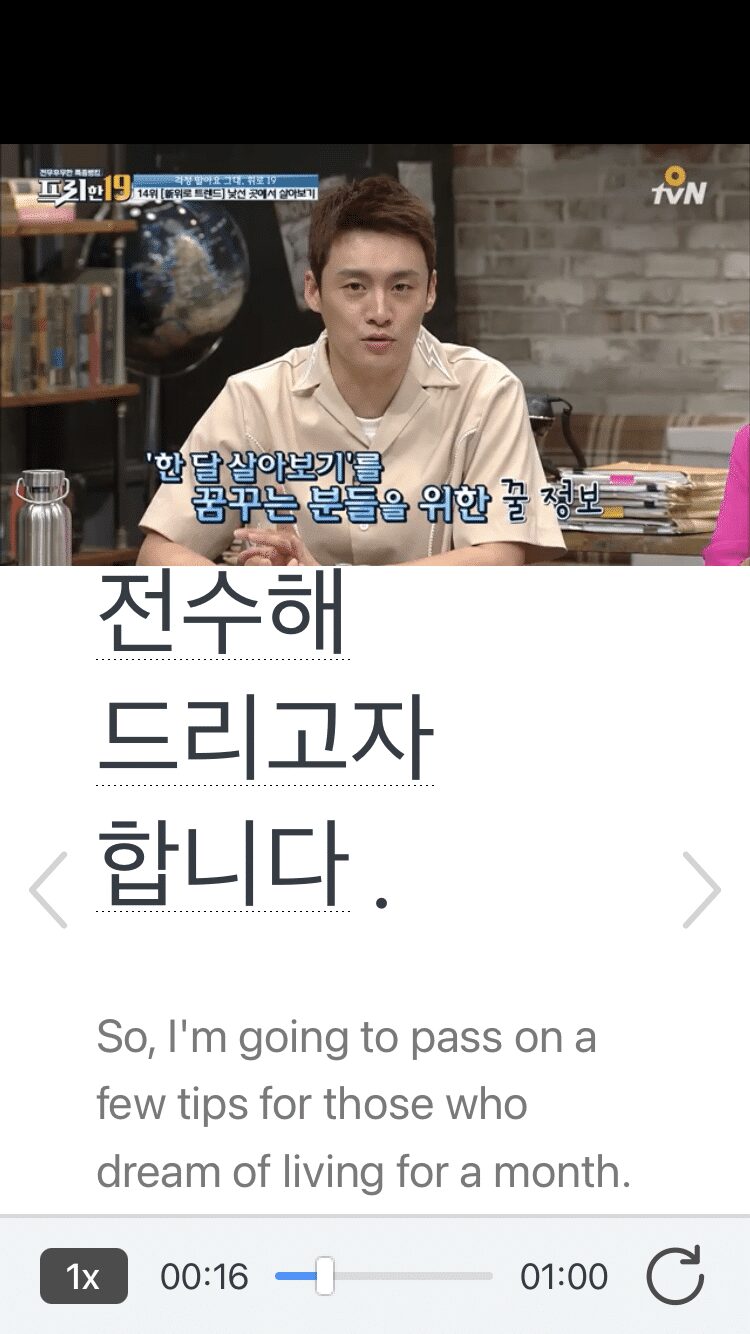
Access a complete interactive transcript of every video under the Dialogue tab, and easily review words and phrases from the video under Vocab.
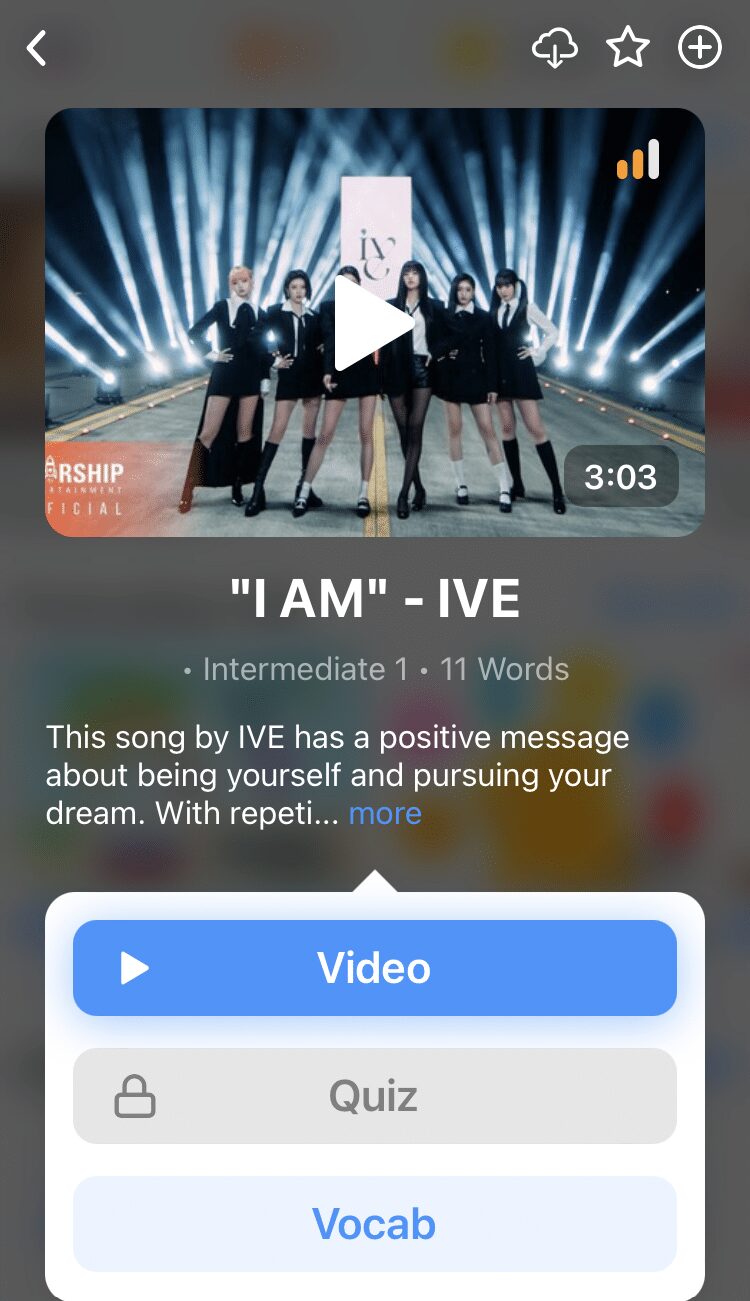
You can use FluentU’s unique Quiz Mode to learn the vocabulary and phrases from the video through fun questions.
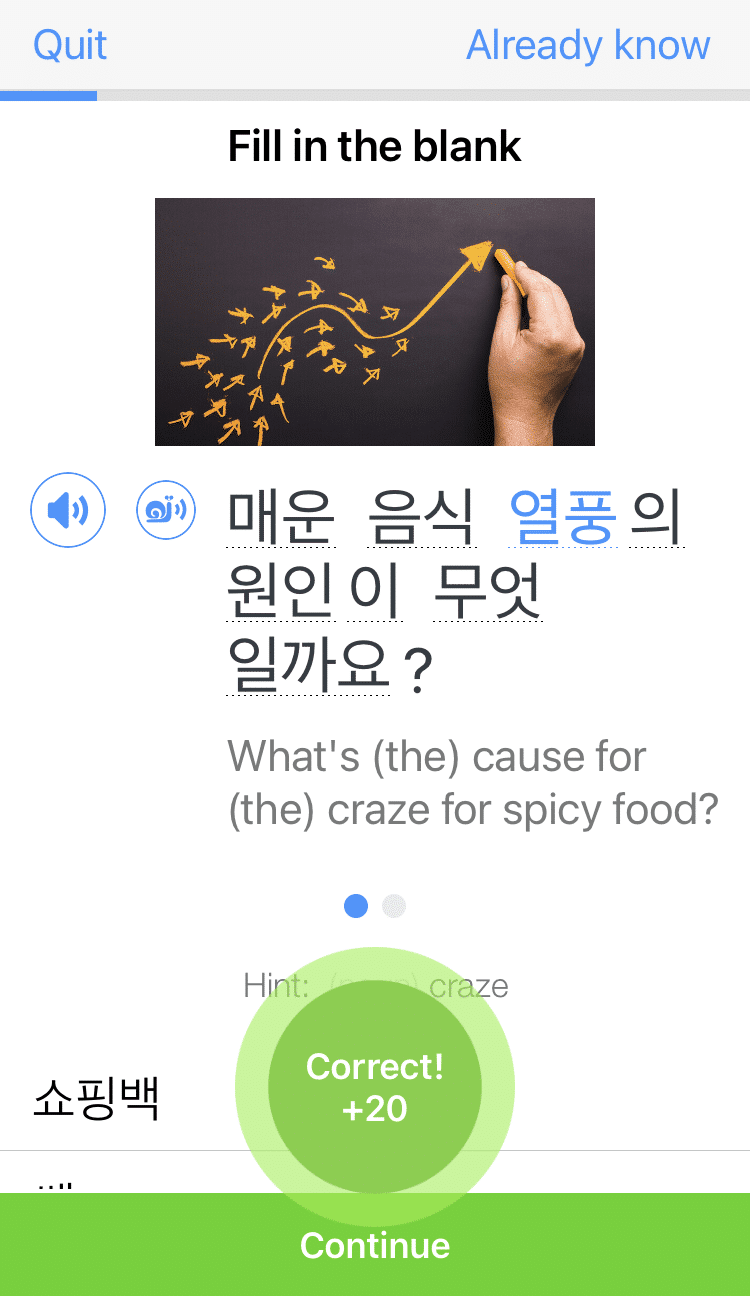
FluentU keeps track of what you're learning, and tells you exactly when it's time for review, giving you a 100% personalized experience.
Review sessions use video context to help embed the words in your memory.
Start using the FluentU website on your computer or tablet or, better yet, download the FluentU app from the iTunes or Google Play store. Click here to take advantage of our current sale! (Expires at the end of this month.)
